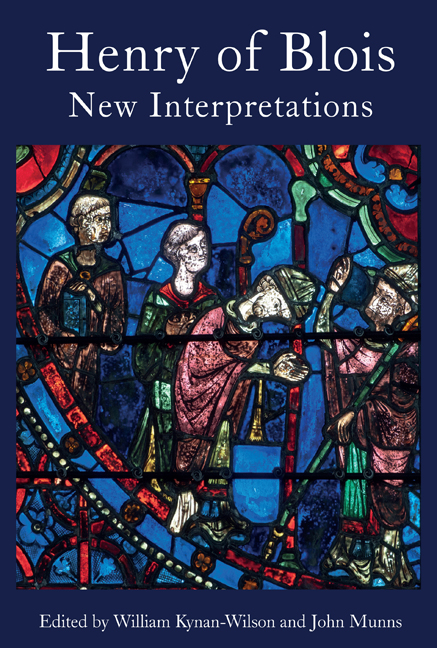Book contents
- Frontmatter
- Dedication
- Contents
- List of Illustrations
- List of Contributors
- Acknowledgements
- List of Abbreviations
- Genealogical Table: The Family Connections of Henry of Blois
- Introduction: Approaches to Henry of Blois
- 1 Causa Dei Et Ecclesie Cluniacensis: Henry of Blois and Cluny
- 2 Henry of Blois and His Legation in England
- 3 The Episcopal Colleagues of Henry of Blois
- 4 The Architectural Heritage of Bishop Henry of Blois at Winchester Cathedral
- 5 Wolvesey: Henry of Blois’ Domus Quasi palatium in Winchester
- 6 Bishop Henry’s Bible
- 7 Henry of Blois and the Construction of Roman Identity
- 8 Henry of Blois: Between Patronage and Representation in the Long Twelfth Century
- 9 The Last Days of Henry of Blois
- Timeline
- Bibliography
- Index
- Plate Section
2 - Henry of Blois and His Legation in England
Published online by Cambridge University Press: 09 February 2021
- Frontmatter
- Dedication
- Contents
- List of Illustrations
- List of Contributors
- Acknowledgements
- List of Abbreviations
- Genealogical Table: The Family Connections of Henry of Blois
- Introduction: Approaches to Henry of Blois
- 1 Causa Dei Et Ecclesie Cluniacensis: Henry of Blois and Cluny
- 2 Henry of Blois and His Legation in England
- 3 The Episcopal Colleagues of Henry of Blois
- 4 The Architectural Heritage of Bishop Henry of Blois at Winchester Cathedral
- 5 Wolvesey: Henry of Blois’ Domus Quasi palatium in Winchester
- 6 Bishop Henry’s Bible
- 7 Henry of Blois and the Construction of Roman Identity
- 8 Henry of Blois: Between Patronage and Representation in the Long Twelfth Century
- 9 The Last Days of Henry of Blois
- Timeline
- Bibliography
- Index
- Plate Section
Summary
Pope Innocent II appointed Henry of Blois as legate in England in March 1139. His appointment coincided with the return to Rome of another legate, Alberic of Ostia, who had presided over the election of Theobald, archbishop of Canterbury. Scholars have seen Innocent's choice of Henry as legate in England as clear-cut, but this can no longer be assumed, especially in light of the recent historiographical debate on the role and faculties of papal legates in the eleventh and twelfth centuries. Here Helene Tillmann's 1926 work on the legatine missions sent to England up to 1218 remains seminal and can be updated thanks to more recent surveys of legatine activity between the eleventh and the thirteenth centuries compiled by Stefan Weis and Werner Maleczek. More recently, Kriston Rennie has focused on the development of the office of papal legate in France, Gaul, and England between the fourth and eleventh centuries, showing how it was transformed under Pope Gregory VII (1073–85) and widely employed from the twelfth century onwards to implement papal government ‘in the localities’ (in partibus). Indeed, the evidence suggests that between the tenth and thirteenth centuries legates were regularly sent to England and Normandy when papal intervention was required. Furthermore, from the mid-twelfth century the papacy delegated special legatine powers to local prelates, particularly making use of the archbishops of Canterbury who had claimed legatine faculties by virtue of their office from the time of Archbishop William of Corbeil in 1126.
However, for the eleventh and twelfth centuries the historiography has emphasised a lack of evidence concerning specific legatine faculties due to the scarcity of surviving mandates of legation and the silence on this point of contemporary canonistic sources. Robert Figueira, in particular, drew attention to the absence of a definition and classification of the legatine office in Gratian's Decretum (compiled by about 1140), suggesting that it was only from the 1230s that the Liber Extra (X 1.30.9) and its commentaries attempted a taxonomy of papal legates in three categories: (i) legatus a latere, sent by the papacy in partibus; (ii) legatus natus, who holds his legatine powers owing to his office in partibus; and finally (iii) a ‘semi-permanent’ legate, who is appointed on a specific matter owing to his personal qualities.
- Type
- Chapter
- Information
- Henry of BloisNew Interpretations, pp. 47 - 68Publisher: Boydell & BrewerPrint publication year: 2021



